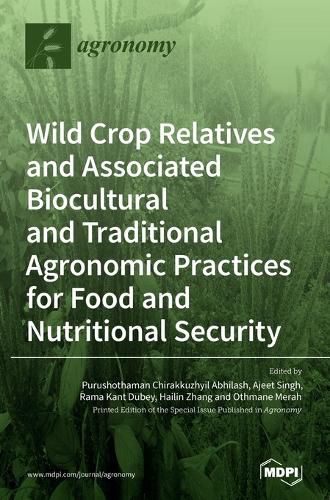Readings Newsletter
Become a Readings Member to make your shopping experience even easier.
Sign in or sign up for free!
You’re not far away from qualifying for FREE standard shipping within Australia
You’ve qualified for FREE standard shipping within Australia
The cart is loading…






This title is printed to order. This book may have been self-published. If so, we cannot guarantee the quality of the content. In the main most books will have gone through the editing process however some may not. We therefore suggest that you be aware of this before ordering this book. If in doubt check either the author or publisher’s details as we are unable to accept any returns unless they are faulty. Please contact us if you have any questions.
The growing world population exerts tremendous pressure on our finite food resources. Since the lion’s share of the global calorie intake is reliant upon a handful of plant species like rice, wheat, maize, soybean, and potato, it is the need of the hour to expand our dietary reliance to nutritionally rich but neglected, underutilized, and yet-to-be-used wild plants. Such wild plants also have ethnomedicinal and biocultural significance. Owing to their ecosystem plasticity, they can be easily cultivated in diverse soil systems, including marginal, degraded, and other disturbed areas. Due to these resilient attributes, they can be considered for large-scale cultivation. However, proper biotechnological interventions are important for removing the negative traits as well as for standardizing the mass multiplication and cultivation strategies of such species for various agro-climatic regions. This Special Issue, Wild Crop Relatives and Associated Biocultural and Traditional Agronomic Practices for Food and Nutritional Security , was dedicated to showcasing the potential wild crop varieties of nutritional significance and associated biocultural knowledge from the diverse agroecological regions of the world and also to formulating suitable policy frameworks for food and nutritional security. The novel recommendations provided by this Special Issue can serve as a stepping-stone for utilizing wild and neglected crops as supplemental foods.
$9.00 standard shipping within Australia
FREE standard shipping within Australia for orders over $100.00
Express & International shipping calculated at checkout
This title is printed to order. This book may have been self-published. If so, we cannot guarantee the quality of the content. In the main most books will have gone through the editing process however some may not. We therefore suggest that you be aware of this before ordering this book. If in doubt check either the author or publisher’s details as we are unable to accept any returns unless they are faulty. Please contact us if you have any questions.
The growing world population exerts tremendous pressure on our finite food resources. Since the lion’s share of the global calorie intake is reliant upon a handful of plant species like rice, wheat, maize, soybean, and potato, it is the need of the hour to expand our dietary reliance to nutritionally rich but neglected, underutilized, and yet-to-be-used wild plants. Such wild plants also have ethnomedicinal and biocultural significance. Owing to their ecosystem plasticity, they can be easily cultivated in diverse soil systems, including marginal, degraded, and other disturbed areas. Due to these resilient attributes, they can be considered for large-scale cultivation. However, proper biotechnological interventions are important for removing the negative traits as well as for standardizing the mass multiplication and cultivation strategies of such species for various agro-climatic regions. This Special Issue, Wild Crop Relatives and Associated Biocultural and Traditional Agronomic Practices for Food and Nutritional Security , was dedicated to showcasing the potential wild crop varieties of nutritional significance and associated biocultural knowledge from the diverse agroecological regions of the world and also to formulating suitable policy frameworks for food and nutritional security. The novel recommendations provided by this Special Issue can serve as a stepping-stone for utilizing wild and neglected crops as supplemental foods.